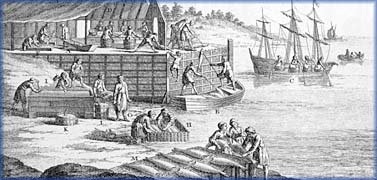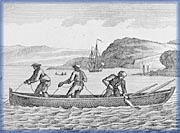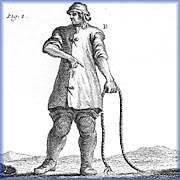|
The Fishermen
|
|
|
The Dry Fishery
 dry-fishery vessel
usually had a crew of 110 to 120 men. They were divided into two
groups: the fishermen and the shore workers. The first group
consisted of 70 fishermen, including 10 who fished for capelin
(used for bait). The second consisted of 10 headers and 10
splitters, who removed the head and split the cod open; 20 stage
workers (salters, sailors, and carpenters and caulkers responsible
for constructing and maintaining buildings, boats, etc.); and 8
apprentices or boys who worked on the shore. dry-fishery vessel
usually had a crew of 110 to 120 men. They were divided into two
groups: the fishermen and the shore workers. The first group
consisted of 70 fishermen, including 10 who fished for capelin
(used for bait). The second consisted of 10 headers and 10
splitters, who removed the head and split the cod open; 20 stage
workers (salters, sailors, and carpenters and caulkers responsible
for constructing and maintaining buildings, boats, etc.); and 8
apprentices or boys who worked on the shore.
|

|
|
Crew working on the stage and the beach
Based on Traité général des pesches,
by Duhamel du Monceau,
in Encyclopédie, fisheries plates (Paris: Éditions
Panckoucke, 1793)
(Collection of Nelson Cazeils, Biarritz, France)
|

|

The shallop fishery (detail), 18th century
Based on Traité général des pesches,
by Duhamel du Monceau, in Encyclopédie, fisheries plates
(Paris: Éditions Panckoucke, 1793)
(Collection of Nelson Cazeils,
Biarritz, France)
|

|

Coastal fisherman, 18th century
Detail of an image from Traité général des
pesches, by Duhamel du Monceau, 1772
(Canadian Museum of Civilization)
|
|
|
|
|
|
|



